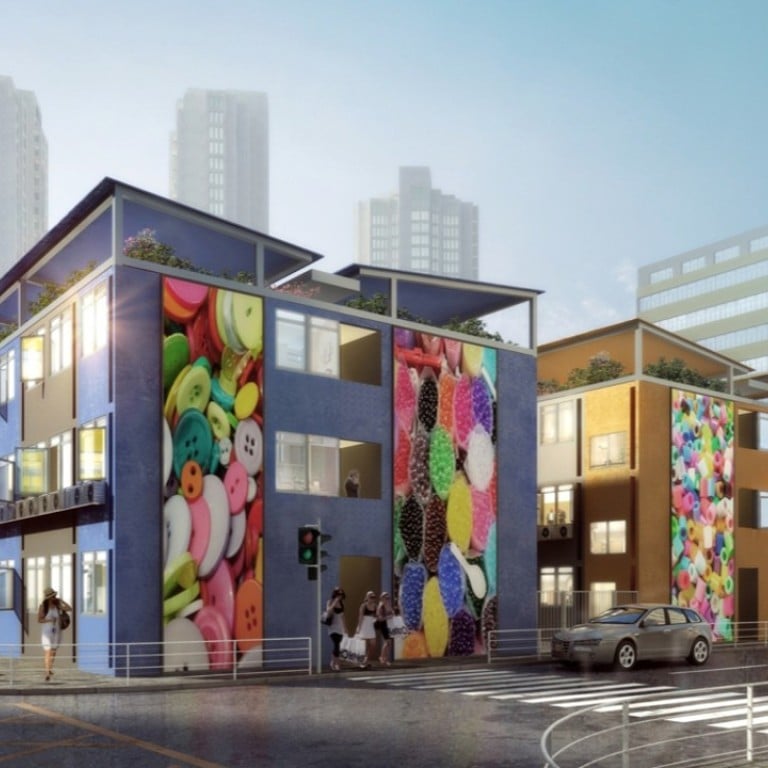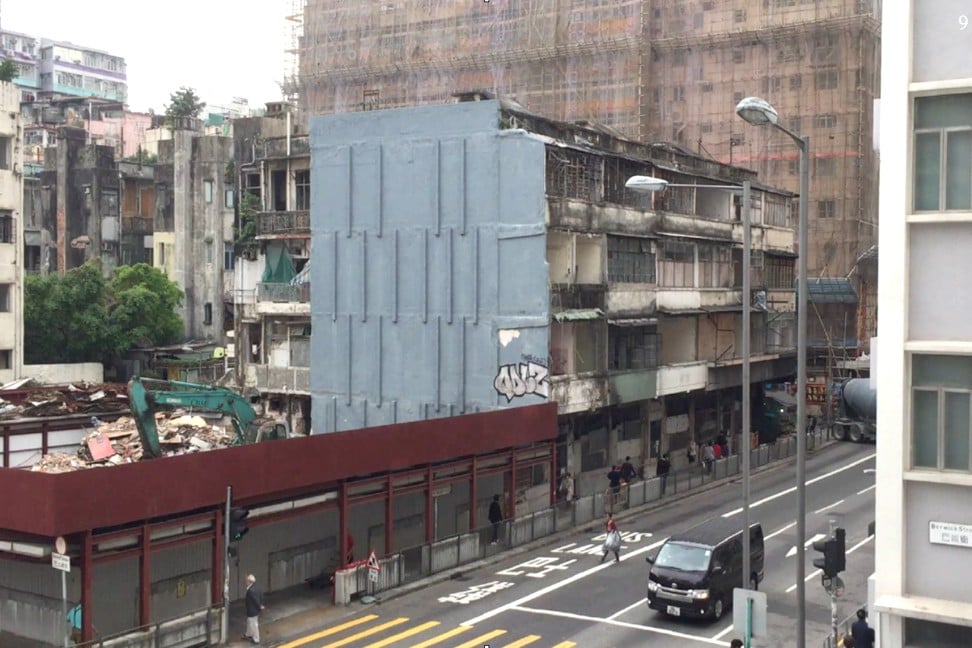
New social housing in Hong Kong will be modern, airy and all colours of the rainbow, Anthony Wong tells Sham Shui Po District Council
Social service groups already in talks with government about whether similar projects to one already planned in the district could be built in three or four different places
Four government sites were under consideration for more social housing projects made of stackable, prefabricated units, it was revealed on Tuesday, after designs for the first batch were unveiled.
The Hong Kong Council of Social Service (HKCSS), an umbrella group of welfare organisations, said it was in talks with the government about whether similar projects to the one already planned in Sham Shui Po could be built in three or four different places.
"We are currently looking at whether some government land, or vacant public land in Kwai Tsing, Hong Kong Island and in the New Territories would be feasible for such projects," HKCSS chief executive Chua Hoi-wai said in a meeting with Sham Shui Po district councillors.
During the meeting, the HKCSS also revealed artist’s impressions of what would be the city's first social housing made from prefabricated modular units.
Comprising 90 flats in three blocks, the development will provide temporary homes for needy families waiting for public housing.
The flats, measuring between 143 and 287 sq ft, will come with separate bathrooms and kitchens. There will also be barrier-free flats designed for people with physical disabilities.

“We hope the development brings an energetic, bright atmosphere to the district. We don’t want to let residents feel like we are building something old and outdated,” Anthony Wong Kin-wai, HKCSS’ business director, told district councillors.
The project will be run by non-governmental organisations, which will be in charge of selecting eligible tenants.
Families are expected to pay no more than a quarter of their monthly salary in rent, and will be allowed to live there for two years.

Private company Henderson Land Development, which owns the Nam Cheong Street site with a view to building luxury private flats, offered it to the organisation on a two-year lease for a token fee of HK$1 (US$0.13).
The hope is to alleviate the hardship of the estimated 210,000 people packed into subdivided flats and other inadequate housing, in a city notorious for some of the world’s highest property prices.
According to official statistics, there were 282,900 applications for public housing as of December. Families face a wait of at least four years and eight months, while the elderly face an average wait of two years and seven months.
‘Prefabricated social housing for Hong Kong’s needy may be completed by next September’
On an RTHK radio programme on Wednesday, Wong said the flats would be completed in the third or fourth quarter next year.
The HKCSS business director said the residents to be accepted for this social housing project could mainly be underprivileged people already living in Sham Shui Po.
“It’s not reasonable that people currently living in Tung Chung would be willing to move to Sham Shui Po, since they probably go to work and go to schools in Sham Shui Po,” he said. “[The accepted applications] could mainly be from people already living in Sham Shui Po … there are many people living in subdivided flats there.”
The council also preferred to accept applications from people who had already been waiting for public housing for at least two years, Wong said.
On average, an applicant waits 4.7 years to get a public flat. And since tenants are allowed to live in the council’s flats for only two years, it would mean that by the time they moved out, it would be about time they got their public flat.
Wong added that the council was working on ensuring that the prefabricated components met local fire safety standards, since components manufactured outside of Hong Kong could have different standards.
Unlike traditional methods of construction, prefabricated modular housing is built and completed off-site, then delivered to the location to be assembled and stacked. Such units can be built in six to nine months.
Two years is too short. If they are unable to be allocated a public flat in that time, will they go back to living in subdivided flats?
While most of the district councillors supported the proposal, some felt that the supply and rental period were "too few and too short", and urged the government to publish a list of suitable vacant sites.
"Two years is too short. If they are unable to be allocated a public flat in that time, will they go back to living in subdivided flats? Asking them to constantly move around is not healthy for families and their psychological state," councillor Lee Wing-man said.
Another member, Yeung Yuk, said: "How can a mere 90 flats help? The government should not shirk its responsibility of providing transitional housing. It should be the one looking for vacant land and building [housing] there."
Chua, of the HKCSS, said that the pilot project was about more than putting roofs over the tenants’ heads.
"Most of these people are often isolated in society and don't know where to go for help. Through this project, by providing the community support they need, they will hopefully be able to stand on their own two feet," he said.
"Even though the 90 flats may seem small against the 280,000 waiting in line for public housing, if we can help one, or 100, or 1,000 people, then at least we made a difference for them.”
Additional reporting by Phila Siu

